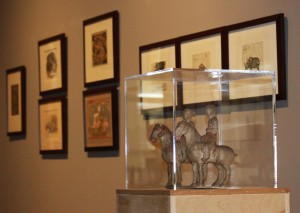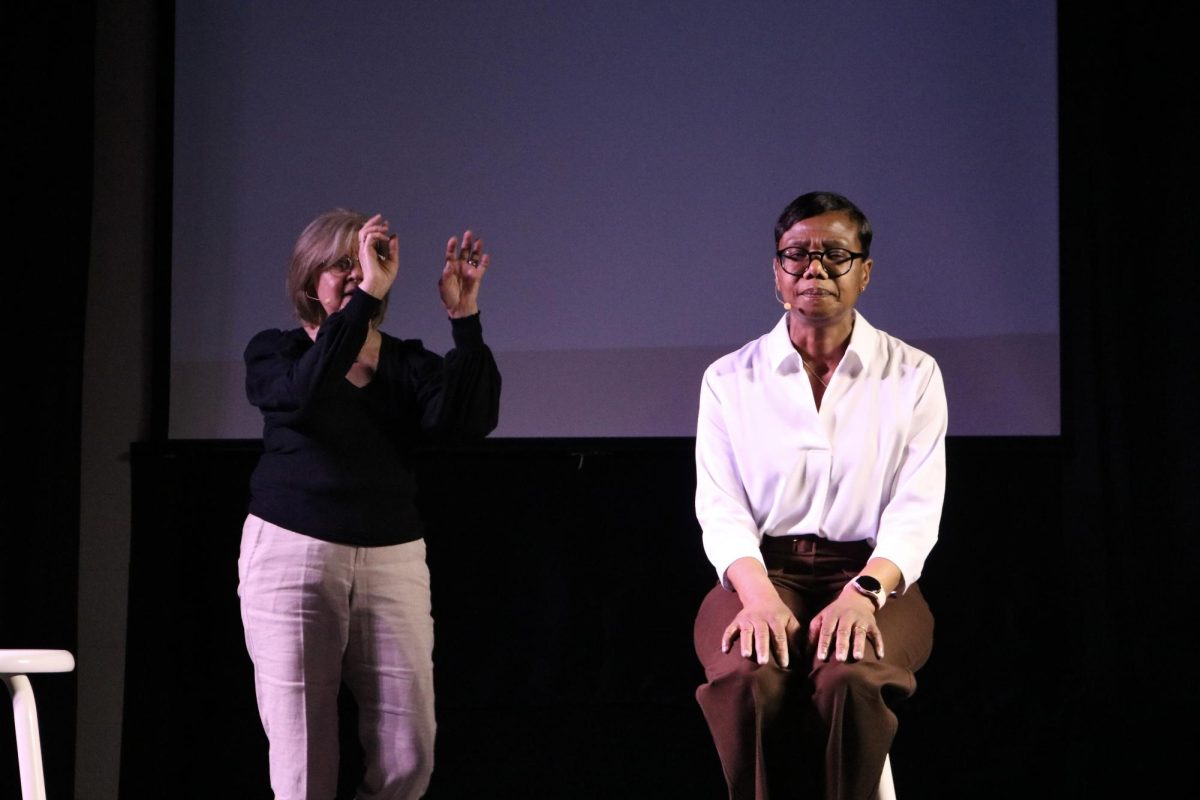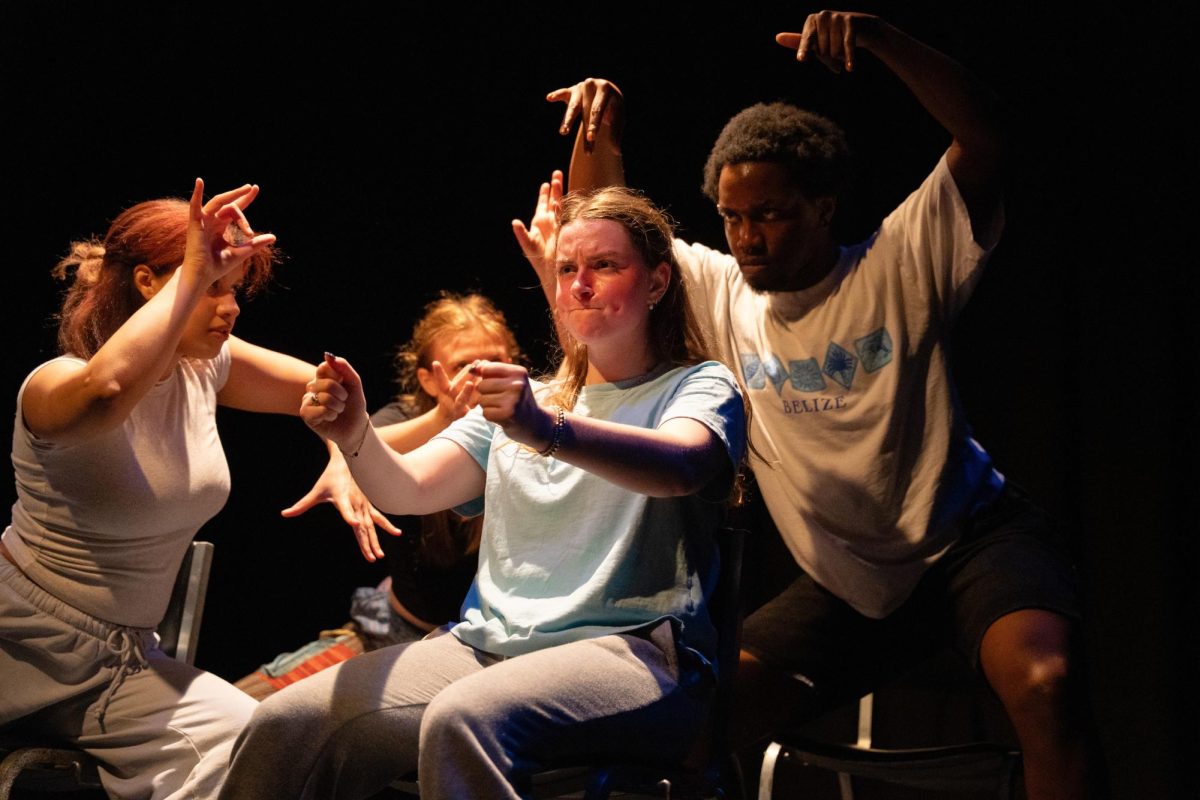By Kelly Pyzik
pyzikkel@grinnell.edu
Today, Grinnell’s Faulconer Gallery will open an experiment in curation entitled Animals Among Us. The exhibition was curated by the ten students in the humanities seminar, Captured Creatures, taught by Lesley Wright, Director of the Faulconer Gallery. It is made up of pieces that are highly diverse in medium, style, age and content, and looks at animals through many lenses, trying to answer the framing questions about human-animal interaction that divide the exhibition into five sections.
When first entering, one is greeted by a wall of pieces that are seemingly the least related in all the show. Glass animal figurines sit next to pop culture representations of animals and the range of colors and shapes is extremely eye-catching.

“It’s supposed to hit the viewer when they walk in with all the different ways we see animals all the time,” Wright said. “It isn’t just in art. It’s constant in our daily lives—advertising, children’s books, breakfast cereal—it’s everywhere. It makes the initial point that animals are among us.”
The first section, “Can we control animals?” demonstrates the diversity of approaches and examples this exhibit uses in order to answer its own questions. Colorful, detailed prints depicting horses tamed and ridden by humans, one way of taking control, are hung next to a strikingly spare and analytical sketch of a rhinoceros—its shape measured in angles and labeled numerically.
“Having ten people curate is a challenge, and having some of those people curate who had not done a lot of work with works of art was an additional challenge, but I think they did a great job,” Wright said. “It was a help that they were mostly seniors, used to working hard and tackling areas that are unfamiliar to them. They brought a fresh eye to the project and put together works of art in each section that I would never think to put together.”
A noteworthy aspect of this exhibit is that all the pieces come from Grinnell College’s own art collection.
“It’s always exciting when we can put up an exhibition made up entirely of objects we own here. It may be something of a revelation to people to see all the pieces we have that they might not even realize we have,” Wright said.
This mash-up of different examinations of animals, humans and all their potential relationships gives the viewer a lot to think about in regard to how different we actually are from other species and whether or not evolution has given us certain privileges. Throughout the exhibit, humans are featured alongside other animals, sometimes in modern, civilized form, other times in very naturalistic ways. The section, “How do we identify with animals?” explores many of the human-animal relationships, juxtaposing a photograph of a soldier with his canine companion against a print depicting a traveling man with a dog pulling his cart.
“The students in the class decided that what they find most interesting about animals is what they tell us about ourselves, and that’s reflected in the title, Animals Among Us. They didn’t want a separation between the animal and human worlds; they wanted them brought together,” Wright said. “Everyone in the class very much saw themselves as part of that animal world, not as outsiders.”
The seminar was an art-focused, multi-disciplinary look at the subject of animals, and the class purposely included students from many different majors. The students are Morgan Carbone ’13, Carla Eckland ’13, Vadim Fainberg ’13, Anna Halpin-Healy ’13, Edith Hammond ’13, Kelly Helbach ’13, Chris Kaiser-Nyman ’12.5, Alexia Klatt ’13, Lydia Mills ’14 and Lee Rodman ’13. Throughout the course, each student was asked to co-teach a class with Wright and to bring in reading from their major’s disciplinary background.
“I hope that people coming to the show will bring interdisciplinary ideas as well,” Wright said.
The course also crossed paths with the animal-focused tutorial of Jackie Brown, Professor of Biology, several times. Wright did an exercise with each class on close-looking at art with animals in it, Brown did an exercise on studying animals like a biologist, and then the classes came together to share their observations from both exercises.
The strangest of all the sections is the final, “What is animal?” It features the most abstract pieces in the exhibit—pensive sketches of human-animal-fused body parts, mythical creatures, humans savagely slaying animals and animals savagely slaying humans. As the question that the students struggled to answer all semester, it draws the exhibit together with a look at their thoughts on how we define the word ‘animal’ and whether or not we as humans can identify with this concept of animalism.






















































